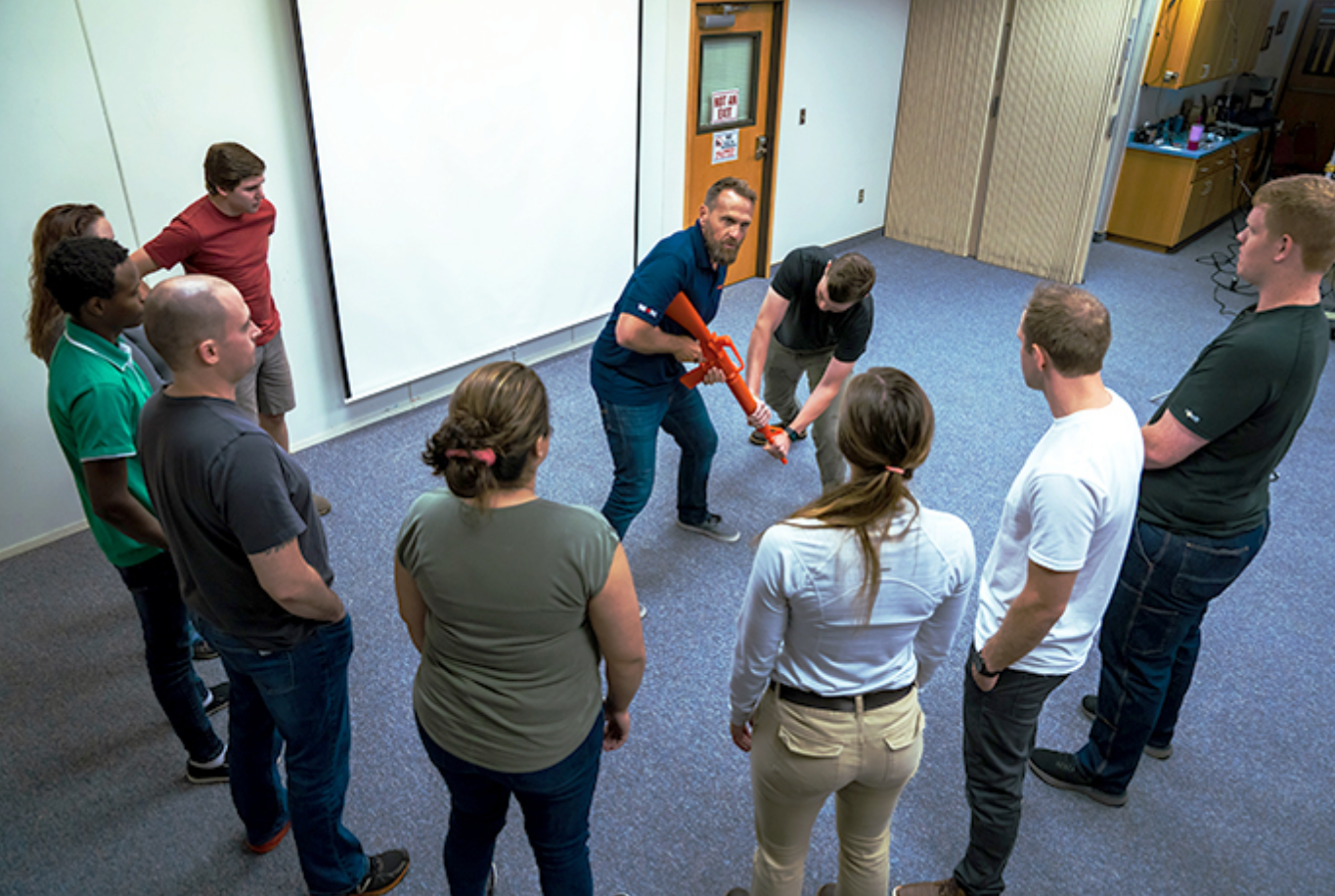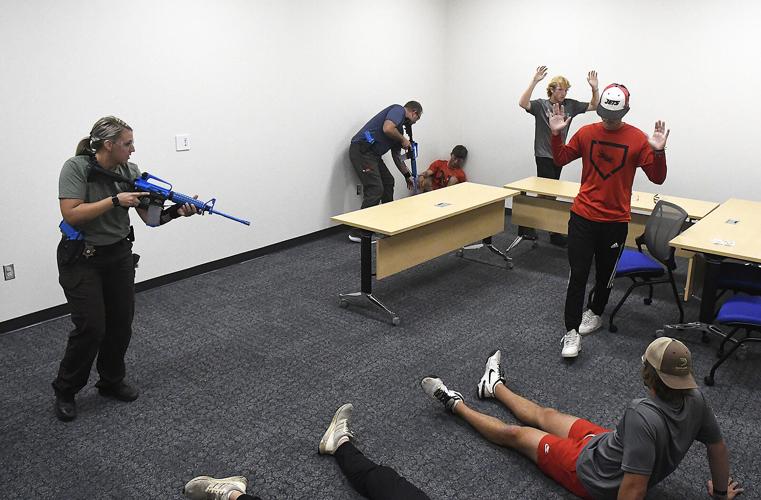Ideal Practices for Applying Active Shooter Training in Your Firm
Ideal Practices for Applying Active Shooter Training in Your Firm
Blog Article
Implementing Active Shooter Training: Ideal Practices for Creating a Safe and Prepared Community Atmosphere
As neighborhoods face the upsetting truth of active shooter incidents, the execution of thorough training programs comes to be essential. What are the crucial elements that can change a common training program into a robust design for neighborhood resilience?

Recognizing the Need for Educating
In a period marked by raising incidents of physical violence in public rooms, understanding the requirement for energetic shooter training has never ever been much more critical. Comprehensive training initiatives can gear up participants with the knowledge and skills to respond emphatically.
Moreover, the psychological impact of violence on individuals and communities can not be overstated. Training promotes a sense of empowerment and preparedness, allowing people to feel more protected in their surroundings. It likewise advertises a culture of safety, where awareness and vigilance become essential components of day-to-day live. The benefits of energetic shooter training expand past instant action; they consist of improving interaction methods and boosting total precaution within organizations.
Key Components of Effective Programs
Efficient active shooter training programs incorporate several essential elements that boost preparedness and reaction abilities. Initially, comprehensive curriculum advancement is important, making certain that training web content is pertinent, evidence-based, and tailored to the specific needs of the company or community. This includes recognizing the dynamics of active shooter events and the mental effect on people involved.
2nd, realistic training circumstances should be used to replicate prospective situations, permitting participants to exercise decision-making and feedback techniques in a regulated setting. These drills help with muscle mass memory and construct confidence among participants.
Third, a concentrate on communication procedures is crucial. Establishing clear lines of interaction amongst legislation enforcement, emergency situation responders, and participants guarantees worked with reactions throughout an incident. Routine updates and refresher course training courses assist maintain communication paths clear and effective.
Fourth, recurring examination and feedback systems should be incorporated right into the training program - active shooter training. Evaluating the efficiency of training with individual comments and efficiency metrics permits for continual improvement
Finally, promoting a society of safety and security and preparedness within the community encourages caution and aggressive actions, guaranteeing that people are not just trained but also taken part in keeping a protected setting.
Engaging Area Stakeholders

To effectively involve these stakeholders, it is necessary to communicate the goals and benefits of the training. Holding informational sessions can aid clarify the training's objective, address issues, and outline the functions each stakeholder may play. In addition, producing a stakeholder advising committee can assist in ongoing dialogue, permitting varied viewpoints and understandings to be incorporated into the training program.
Building connections with community leaders and companies is likewise essential. Their support can improve outreach efforts, boost involvement, and ensure that training is tailored to the one-of-a-kind needs of the community. In addition, stakeholders can assist in sharing info and resources, enhancing the message of security and readiness.
Eventually, engaging neighborhood stakeholders not just enhances the training initiative yet also grows a Recommended Site sense of possession amongst citizens, resulting in an extra durable and educated neighborhood qualified of responding successfully to possible hazards.
Educating Distribution Approaches
Using a range of training delivery approaches is essential to suit the varied discovering styles and needs of individuals in energetic shooter training programs (active shooter training). Effective training can take several kinds, consisting of talks, hands-on simulations, on the internet modules, and interactive workshops. Each approach serves a distinct objective and can improve the overall learning experience

On-line modules use flexibility and access, making it possible for participants to find out at their own speed. These can consist of video clips, tests, and discussions to assess understanding. Interactive workshops encourage seminar and problem-solving, promoting team effort and interaction skills.
Integrating a mixed approach that integrates these methods not just enriches the training experience however additionally makes sure that individuals are better prepared to react properly in the event of an energetic shooter situation (active shooter training). By resolving different discovering preferences, companies can create a more informed and receptive directory area
Continual Assessment and Enhancement
Routine evaluation and enhancement of active shooter training programs are vital to keeping their significance and efficiency. As dangers advance, so need to the approaches and techniques used in training. Continual examination makes sure that training material reflects the most recent knowledge on active shooter cases, including lessons discovered from recent events and readjusting for arising patterns.
To facilitate this process, organizations ought to develop responses systems that include participant assessments, expert testimonials, and case debriefs. Accumulating data on this website participant efficiency during drills and exercises is vital, as it highlights areas needing renovation and educates future training sessions. Furthermore, engaging with law enforcement and emergency situation -responders can offer important insights right into the functionality and applicability of training methods.
On a regular basis set up testimonials of training products and techniques should be mandated, cultivating a setting of development and adaptability. Organizations has to likewise motivate a culture of ongoing learning, where team member feel empowered to suggest changes based on their experiences. By devoting to constant assessment and enhancement, companies not only enhance the performance of their energetic shooter training programs however also enhance their overall dedication to safety and readiness within the community.
Verdict
Finally, effective implementation of energetic shooter training demands a thorough method that prioritizes neighborhood engagement and realistic simulations. By creating customized educational programs, integrating varied training approaches, and promoting collaboration among stakeholders, neighborhoods can boost readiness. Continuous examination and responses devices are vital for adjusting programs to arising threats, thereby strengthening overall security. Eventually, a dedication to recurring training and renovation cultivates a culture of caution and preparedness, making certain a safer atmosphere for all area participants.
Report this page